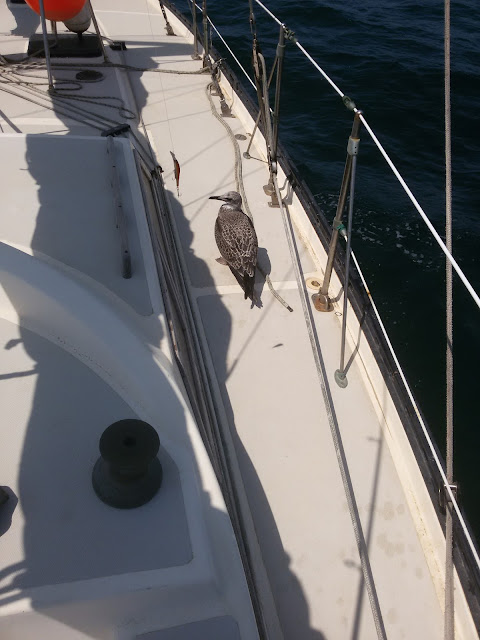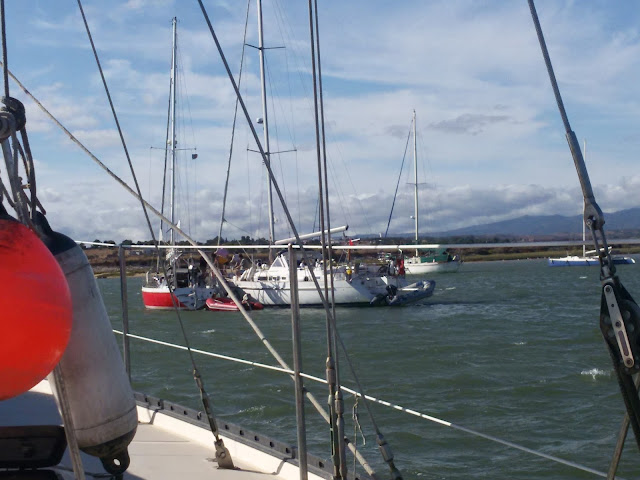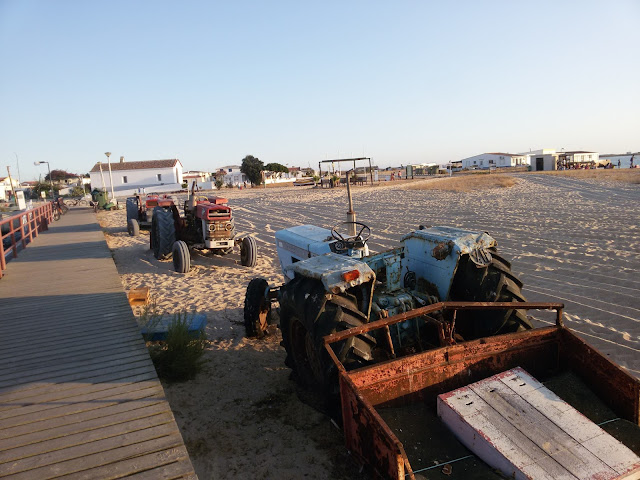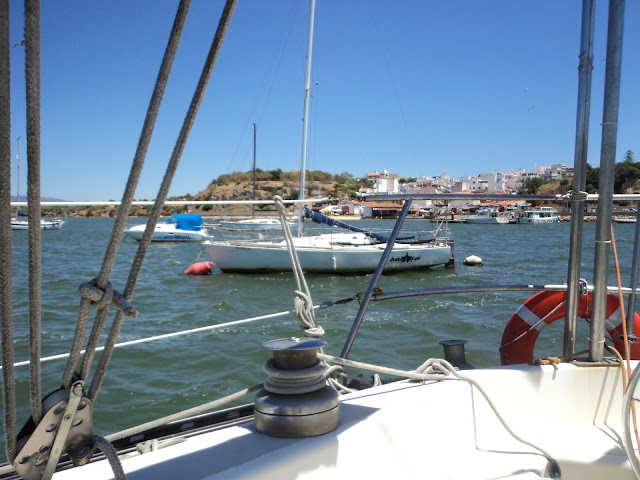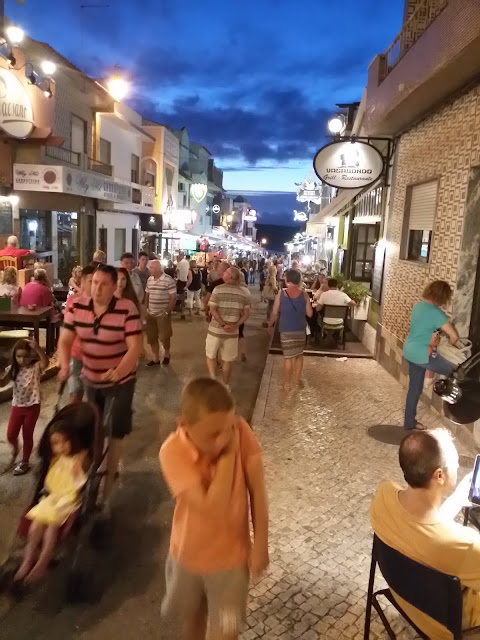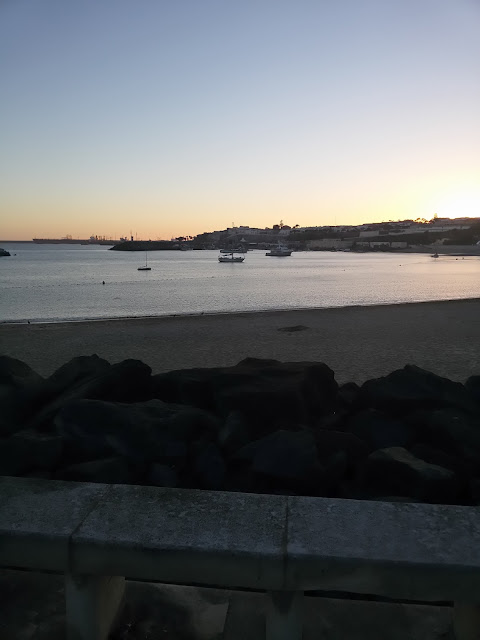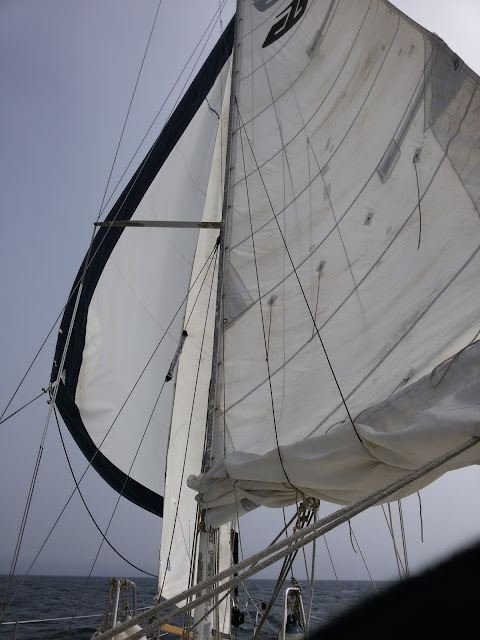After 13 years of part-time ocean cruising, ships still make me nervous - but mainly at night.
But I'm no hero like the skipper in the clip below.
During the day in open water, I assume ships will respect a sailboat's right of way - if sailing - and I also have a clearer picture of where they're heading. If I'm motoring, I assume I can avoid them fairly easy.
Although it's just fishing lines, hooks and small floats, you'd have a hell of a mess if you ever got one rolling in your propeller. Last year I dove down in open water to cut myself free from a thick line leading to a bottom net, but I don't think I'd be too enthusiastic about diving down into a mess of hooks. They're called hooks for a good reason. But you could always sail to the next anchorage, careen the boat on a sand bank and sell the fish.
That's enough pessimism for today. I guess next year I'll be sailing to the Algarve solo again.
But I'm no hero like the skipper in the clip below.
During the day in open water, I assume ships will respect a sailboat's right of way - if sailing - and I also have a clearer picture of where they're heading. If I'm motoring, I assume I can avoid them fairly easy.
 |
| On my way home this year, when I first saw this ship, prior to this picture, I thought it was going to pass in front of me. |
 |
| In the end, after a few course changes, it steamed past my stern. To think of it, the exact same thing happened last year. |
Imagine if this had happened at nigh. I'd be a little nervous to say the least. It makes sense to assume that ships will monitor their radar screens more carefully near land. But then it also makes sense to trust a pit-bull's owner when he tells you that his snarling dog doesn't bite...at least not yet!
The truth is, just about anything makes me nervous at night, especially when sailing the Portuguese coast which, except for pirates, is mined with a variety of hazards: ships, fishing boats, many lobster pot markers, debris and sleeping skippers on automatic pilot. I'm not kidding. Some years ago while sailing with another 3 boats, we had to dodge a large sailboat that sailed right through us without a soul on deck, nobody, and all sail up.
Then there's a fishing system called "palangre". You see it only when it's right in front of you, if the ocean is calm. Otherwise you don't see it at all. It looks something like the diagram below, except the floats are cork rings about the size of a big doughnut.
 |
| The floats fishermen use around here are tiny and laid out at about 20-meter intervals. I don't know how long the surface line is because I never see where they start or end. |
That's enough pessimism for today. I guess next year I'll be sailing to the Algarve solo again.
